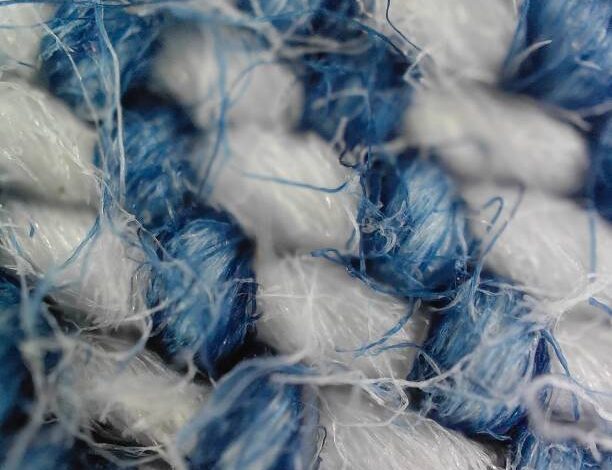Recycled Fibers: A Sustainable Solution for Eco-Friendly Fashion

As sustainability becomes increasingly important, both consumers and industries are shifting toward eco-friendly alternatives. One of the most significant developments in this movement is the use of recycled fibers in textiles. Recycled fibers are an innovative solution to reducing waste, lowering the environmental impact of the fashion industry, and promoting a circular economy. But what exactly are recycled fibers, and how are they transforming the future of sustainable fashion?
In this article, we’ll explore the various types of recycled fibers, their benefits, the process of making them, and why they are a top choice for eco-conscious brands and consumers alike.
What Are Recycled Fibers?
Recycled fibers are materials that are repurposed from post-consumer waste (such as plastic bottles and old garments) or post-industrial waste (like textile scraps from manufacturing processes). These materials are broken down, processed, and re-spun into new fibers, which can be woven into fabric for clothing, home textiles, or even industrial products.
There are two main categories of recycled fibers:
- Mechanically recycled fibers: These are created through mechanical processes, where the material is shredded and processed into new fibers. For example, polyester made from recycled plastic bottles (commonly known as Repreve) is a popular mechanically recycled fiber.
- Chemically recycled fibers: In this method, materials are chemically broken down and reformed into new fibers. This technique is often used for more complex fibers such as nylon.
How Recycled Fibers Are Made
The process of making recycled fibers depends on the type of material being recycled, but generally follows a series of steps:
- Collection: Materials, such as discarded clothing or plastic bottles, are collected from recycling programs or waste streams.
- Sorting and Cleaning: The collected materials are sorted by type, such as polyester, cotton, or plastic, and thoroughly cleaned to remove contaminants like dirt or dye.
- Shredding or Melting: In mechanical recycling, the cleaned materials are shredded into small pieces and then processed into fibers. For chemical recycling, the materials are melted down and chemically transformed into new fibers.
- Spinning and Weaving: The newly recycled fibers are spun into yarn and woven into fabric, ready to be used for various textile products.
Benefits of Recycled Fibers
Recycled fibers offer several environmental and economic benefits, making them a sustainable choice for the future:
- Reduces Waste: By repurposing materials that would otherwise end up in landfills, recycled fibers help reduce the volume of waste generated by industries and consumers.
- Lowers Carbon Footprint: Producing new fibers from raw materials requires significant energy and resources. Recycled fibers reduce the need for virgin materials, lowering energy consumption and greenhouse gas emissions.
- Conserves Natural Resources: Virgin fiber production often relies on non-renewable resources like petroleum (for polyester) or large amounts of water (for cotton). Recycled fibers reduce the strain on these natural resources.
- Supports Circular Economy: Using recycled fibers promotes a closed-loop system, where materials are continually reused rather than disposed of, creating a more sustainable and circular fashion economy.
Popular Types of Recycled Fibers in Fashion
There are several types of recycled fibers commonly used in the fashion industry, each offering unique advantages:
- Recycled Polyester (rPET): Made from recycled plastic bottles, rPET is one of the most popular recycled fibers due to its durability and versatility. It’s used in everything from athletic wear to outerwear and helps to reduce plastic waste.
- Recycled Cotton: This fiber is created from cotton scraps or worn-out cotton garments. Recycled cotton is often blended with virgin cotton to maintain fabric strength and durability.
- Recycled Nylon: Typically made from pre-consumer waste such as industrial fishing nets, recycled nylon helps reduce plastic pollution in oceans while providing a high-performance material for activewear and swimwear.
- Recycled Wool: Recycled wool is made from wool garments that are shredded and re-spun into new yarn. This process uses less energy and water compared to producing new wool.
Recycled Fibers in Fashion: Brands Leading the Way
Many fashion brands are embracing recycled fibers to create more sustainable products. Brands like Patagonia, Adidas, and Stella McCartney are using recycled polyester and other recycled materials in their collections, promoting eco-conscious choices to their consumers.
For instance, Patagonia has long been a leader in sustainable fashion, using recycled polyester made from plastic bottles in many of its products. Adidas has also launched initiatives like the Parley for the Oceans collection, which uses recycled ocean plastic in its shoes and apparel.
Challenges of Using Recycled Fibers
While recycled fibers have numerous advantages, they also present certain challenges. For example, recycled fibers can sometimes be weaker than their virgin counterparts, especially when mechanically recycled. This often requires blending with virgin fibers to maintain the quality and durability of the fabric. Additionally, the recycling process can be energy-intensive, particularly in chemical recycling methods, though it still offers a lower environmental impact compared to producing new fibers from scratch.
Moreover, consumer demand for affordable, fast fashion can sometimes clash with the higher cost of sustainable production methods, making it essential for brands to educate their customers on the value of choosing eco-friendly materials.
Conclusion
Recycled fibers are playing an increasingly important role in the shift toward sustainable fashion. By reducing waste, conserving natural resources, and promoting a circular economy, recycled fibers offer a solution to some of the fashion industry’s most pressing environmental challenges. Whether it’s recycled polyester made from plastic bottles or recycled cotton from old garments, these fibers demonstrate that sustainability and style can go hand in hand.
As more brands and consumers prioritize eco-friendly practices, the use of recycled fibers is likely to continue growing. By choosing products made from recycled materials, you can help support the movement toward a more sustainable and responsible fashion industry.




